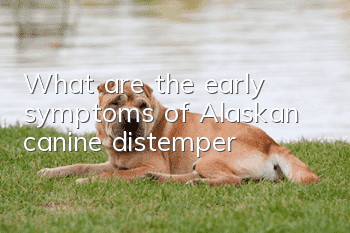What are the early symptoms of Alaskan canine distemper?

In the early stage of canine distemper infection in Alaska, the body temperature will rise, usually around 39.5 to 41 degrees, and there will be a loss of appetite, the spirit will become depressed and depressed, there will be secretions coming out of the eyes and nose, sneezing, and diarrhea. The initial symptoms are similar to those of a cold, so many owners will think that their dogs just have a cold, causing Alaska to miss the best treatment period. Once the dog reaches the middle and late stages of canine distemper, the dog's body temperature will rise again. At this time, the dog will start to cough, there will be purulent secretions from the eyes and nose, and it may even cause blindness. In addition, as the gastrointestinal disease worsens, the dog will vomit and have diarrhea, completely lose appetite, and become highly lethargic.
Treatment methods for canine distemper infection in Alaska:
1. Go to the hospital in time, the sooner the better.
2. Canine distemper must be eaten. If the dog is weak and sick, you can use goat milk to soak the dog food until it is soft to promote digestion. It must be noted that not eating is the biggest taboo for canine distemper. Almost half of the treatment lies in eating.
3. Treat the cause of the disease symptomatically. Although it treats the symptoms rather than the root cause, it is equally important! For example, when convulsions occur, some anti-convulsant drugs can be appropriately applied to make the dog less uncomfortable and have more strength to fight against the disease.
4. Prevent secondary infection. Secondary infection here generally refers to bacterial infection. Canine distemper itself is a viral infection, but in some cases, viral infection can easily lead to secondary bacterial infection, thus aggravating the condition.
- Why don’t dogs like having their paws touched?
- Why is the dog vomiting white foam?
- How to train Shiba Inu puppies? Daily training methods for Shiba Inu puppies!
- How to tell when dogs are constipated? Some common factors that cause dog constipation!
- What to do if your dog is hit by a car
- How do I discipline Alaska’s dog who loves to bite?
- St. Bernard dog gastroenteritis symptoms and treatments
- How to choose Samoyed? Samoyed buying tips!
- When your dog has these abnormal conditions, don’t you pay attention?
- What should novices pay attention to when buying a pet dog? These tips can help you!



